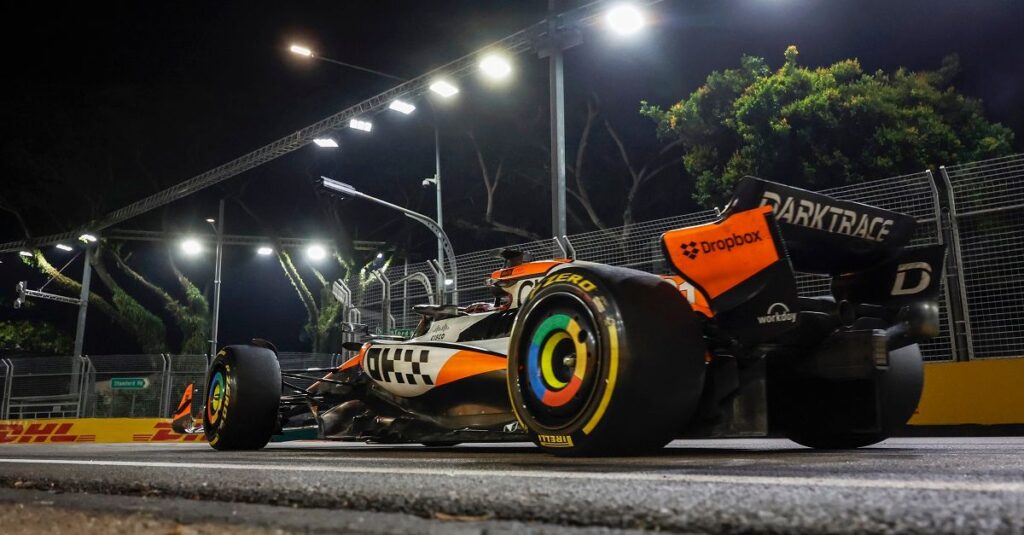The month – in spite of something – between the last GP, in Singapore, and the next one in Austin, Texas (18-20/10) allows the Formula 1 teams to develop extensive upgrade packages for their cars. We look at the changes McLaren, RBR, Ferrari and Mercedes are preparing for the 6 GPs until the end of the season, starting today (3/10) with the McLaren MCL38.
The Texas GP kicks off the first of two back-to-back GP trios that will bring us to the end of this year’s Formula 1 championship on December 8 in Abu Dhabi.
The changes the teams will make to their cars for either the Texas race or one that follows are likely to be the last for this year. They are crucial to the battle for the constructors’ title, between McLaren, RBR and Ferrari, but also the drivers’ championship contested by Max Verstappen and Lando Norris.
Also, the upgrades are not limited to this year’s cars. Many of these are expected to be test components for the 2025 car redesign – as may be the case with Mercedes, which is claiming no better than 4th place among manufacturers this year.
Oscar Piastri in the cockpit of the McLaren MCL38 at the 2024 Singapore GP
MCLAREN MEDIA CENTRE
So let’s see, with a series of articles from today until Sunday (6/10), what changes we should expect in the cars of the so-called “Big-4”, McLaren, Red Bull, Ferrari and Mercedes, in Texas. Starting, today (3/10), with the car of the points leader, McLaren:
McLaren MCL38
Since May, McLaren’s car has been the only one to perform equally competitively on any kind of track in all conditions, and as a result – especially after Lando Norris’s commanding victory in Singapore – it is easy for the Woking team to hesitate. to make big changes to it.
After all, at Zandvoort at the end of August McLaren presented a series of major upgrades, which worked well, and now it is questioning whether it should interfere with its floor design – seeing, at the same time, the problems with their own floor redesign that the others have had three groups.
Oscar Piastri, McLaren MCL38, Singapore GP 2024
MCLAREN MEDIA CENTRE
The English team is still using the new floor they introduced at the Miami GP in May, with minor improvements of course along the way, and based on results they doubt whether they should change / improve it. But team manager Andrea Stella considers it a risk even to keep the MCL38 floor unchanged.
“That was one of my concerns after the (Singapore) match.”said the Italian. “We’ve got some things on the road, and obviously when it performs like that on the track you always approach things carefully in terms of (the car’s) development.
But, at the same time, we have to trust the processes. We have to trust the way we have been working so far. I’m not sure you can at F1 to hold back for too long, because if you hold back it means that others may catch you. And we don’t know what other people’s plans are.
OR Ferrari she showed (in Singapore) in the free trials that she was as fast as we were. And the Red Bull she was the second force on a track we didn’t expect to be her best. So I think we have to be aggressive in terms of development.”added Stella.
McLaren F1 director Andrea Stella
MCLAREN MEDIA CENTRE
The Italian said the moment of unveiling the MCL38 upgrades will come from the FIA documents, before each GP. Which means we should expect a new, big upgrade, if not in Texas at one of the next races.
“This time we are perfecting it. I don’t want to reveal too much about how and when, but we have a plan to make the car faster. Whether we succeed remains to be seen, because we have found that at this level of development it is not an easy task to change the specifications of the car and make it work as you expect.
That’s why we took a little more time to make sure that whatever we brought to the track would be successful. We remain committed to each race individually, to bring the upgrades we plan to the next races”concluded Andrea Stella.
McLaren technical director Rob Marshall with Oscar Piastri in the McLaren garage
MCLAREN MEDIA CENTRE
For his part, the team’s technical director Rob Marshall added: “It’s all about, constantly, chasing more boost. We kind of like to collect a lot of small (new) parts and make a big hit.
So far we are dedicated to collecting all these small pieces. And at some point hopefully we’ll get a big upgrade. In a way it’s nice to bring lots of small upgrades all the time, but on the other hand sometimes you have to hold onto them to bring them all together at the same time.
The advantage in the second case is that the small parts often don’t fit together as well, or as well as you thought. So if you’re going to bring them all at once, then you know you’ve tried their combination in CFDs, you’ve developed them all together, you’ve put them together in the wind tunnel, so you can be more sure that their combination will work.
If you do it piecemeal, you might bring an upgrade to one part (of the car) and then when you want to work on another, you find that basically there’s a compromise that comes from the previous change you made.”Rob Marshall concluded.

